Treat yourself to massages, body treatments, Nordic baths and other sensory delights.


THINGS TO DO
Your Townships adventure starts here.
Spa & Wellness
Treat yourself to massages, body treatments, Nordic baths and other sensory delights.
Arts, Culture & Heritage
Let your imagination run free at galleries, theatres, museums and workshops.
Shopping
Scour our markets, boutiques and other hidden gems to score incredible finds.
Restaurants
All are sure to please even the most discerning of palates. Bon appétit!
Events
Discover our cultural vitality with a wide range of special events.
Skiing
To each mountain its experience! Skiing or snowboarding, you will love hitting the slopes, whichever the ski resort you will vote for!
Snowshoeing
Explore our great outdoor spaces at your own beat. Let yourself be charmed by our landscapes. And breathe!
Cross-country Skiing
Cross-country skiing in the Townships … at your pace and your level!
Fatbike
Discover our numerous trails as you enjoy pedalling on the snow.
Where to stay
Lodging options to suit any taste and budget.
Hotels & Country Inns
Stunning locations and outstanding service come together for a bliss-inducing stay.
Bed & Breakfasts
Get up close and personal with life in the Townships.
Off the Beaten Path
Think outside the box with out of the ordinary accommodations.
Cottages & Condos
Custom comfort near the city or in nature.
Campgrounds
Abundant amenities in the heart of nature.
Vacation Centres
Kick back and relax as a family with all-inclusive vacation options.
Other Types of Lodging
Experience something different by choosing unique lodging.
Lodgings with Spa Options
Plan a stay in an accommodation with a private spa or a treatment center. Relaxation guaranteed!
Hikers Welcome
If you, like thousands of visitors annually, plan on hiking in the region, know that your efforts will be rewarded by our world-class hospitality.
Pet Friendly
Don’t want to leave your four-legged friend behind? Book a stay in some of the region’s many dog-friendly digs and you won’t have to.
The Townships
The Townships possess a rich heritage that you will discover everywhere on its nine territories, in its towns and villages, its Coeurs villageois, etc.
Not to be missed
What is it that draws visitors to the region, year after year? Find out here :
Cœurs villageois
Visit our Cœurs villageois – charming communities that truly characterize the spirit of our region.
Towns and villages
Explore our lively, welcoming towns and villages with their heritage architecture and fascinating histories.
Nine territories to discover
Each territory has a distinct personality and a wealth of hidden treasures just waiting to be discovered!
The Townships at a glance
Here’s a glimpse of the region, a few historical notions, and numbers.
Tourist routes
Hit the road! The region has several tourist routes designed around different themes – heritage, scenic landscapes, wine….
National and regional parks
Four national and two regional parks – an outdoor paradise in the fresh air, each and every one!
Taste the townships
Here, in so many ways, you’ll enjoy all kinds of gastronomical experiences! When you discover our unique products and our highly renowned tables, you’ll love us forever!
Restaurants
Every time you sit down at one of our tables, you’ll experience a truly special moment. Savour it!
Cafés de village
Visit our Cafés de Village and discover each one’s specialties while meeting the most welcoming and friendly people.
Créateurs de Saveurs Products
You can rely on our food producers who put as much love as delicious flavours into everything they plant and produce.
Vineyards
The Route des vins de Brome-Missisquoi, the Route des vins de l’Estrie, and about twenty other vineyards… The Townships region proudly honours its title of being the first wine region of Quebec.
Microbreweries
The region counts more than twenty microbreweries! Just like the people who run them, each one has established their own strong, unique personality and … extremely inviting character!
Cheese Factories & Dairy Producers
goat’s milk… Here you’ll savour rich artisanal cheeses. Some you already know, many others you’ll enjoy discovering.
Sugar shacks
Enjoy a traditional meal and maple taffy on snow.
Restaurants Saveurs Cantons-de-l’Est
These restaurants prioritize local producers and offer dishes made with regional ingredients, providing an authentic experience of the Eastern Township terroir.
Foodie’s Maps
Brasseurs des Cantons and Têtes fromagères are two gastronomical circuits highlighting our microbreweries and cheese factories.
Gourmet Itineraries
Plan your stay by offering yourself a wealth of flavours. Consult our getaway ideas.
Weekend and Trip Ideas
Discover our activities suggestions, getaway ideas and itineraries in the Townships.
Family Outings
Find loads of ideas for memorable family outings!
Romantic Getaways
Outings, restaurants, spas, weekend ideas… Suggestions for spending some precious moments together.
Outdoor Activities
Snowshoeing, skiing, fatbiking, tube sliding... Without a doubt, all outdoor enthusiasts are sure to find something to do here!
Wellness Experiences and Spas
Let us help you take care of yourself.
Itineraries
Whether for two, with your family or with friends, here you will find a ton of suggestions for planning perfect getaways!
Blogs and articles
Our collaborators have tested several different adventures … and have approved!
Townships Ambassadors
Meet inspiring locals, discover their favourite spots and get their best insider tips!
Coeur villageois
Visit our Cœurs villageois – charming communities that truly characterize the spirit of our region.
Towns and Villages
Explore our lively, welcoming towns and villages with their heritage architecture and fascinating histories.
Guide and Maps
View our guide and maps online or order your free copies.
Updated on Apr 10, 2024
Today there are only a few round barns still standing in the southern part of the Eastern Townships, but they’re the pride of our local citizens and attract the curiosity of visitors. Here are 5 round barns you can still admire when you’re visiting the area.
By Marie-Claude Masse
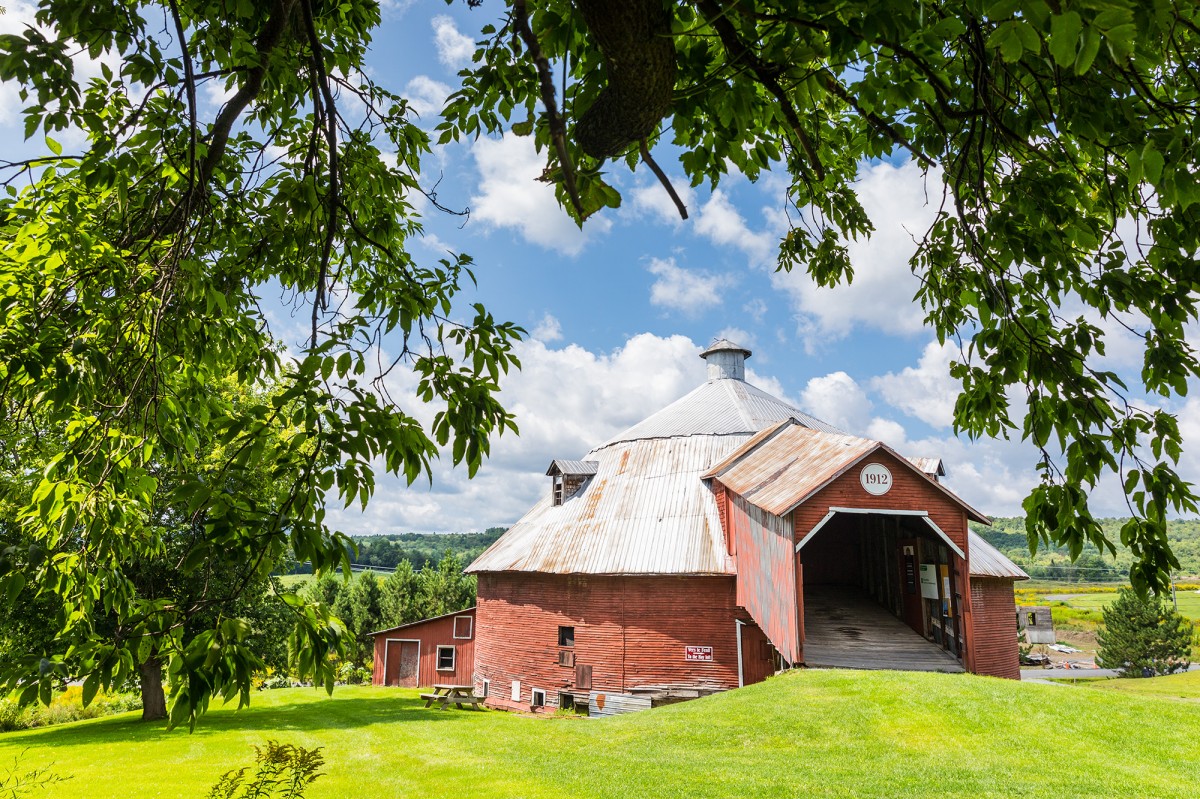
Built in 1911, the Mansonville round barn, with its clapboard siding, has three stories and a tin roof topped with a cupola and gable roof dormers. Thanks to several contributions and grants, plus many donations, a lot of restoration work is being carried out to return it to its lustre of the past. Once completed, this barn will become an interpretation centre for the region’s agricultural, forest and landscape built heritage.
323, Mansonville Rd, Mansonville
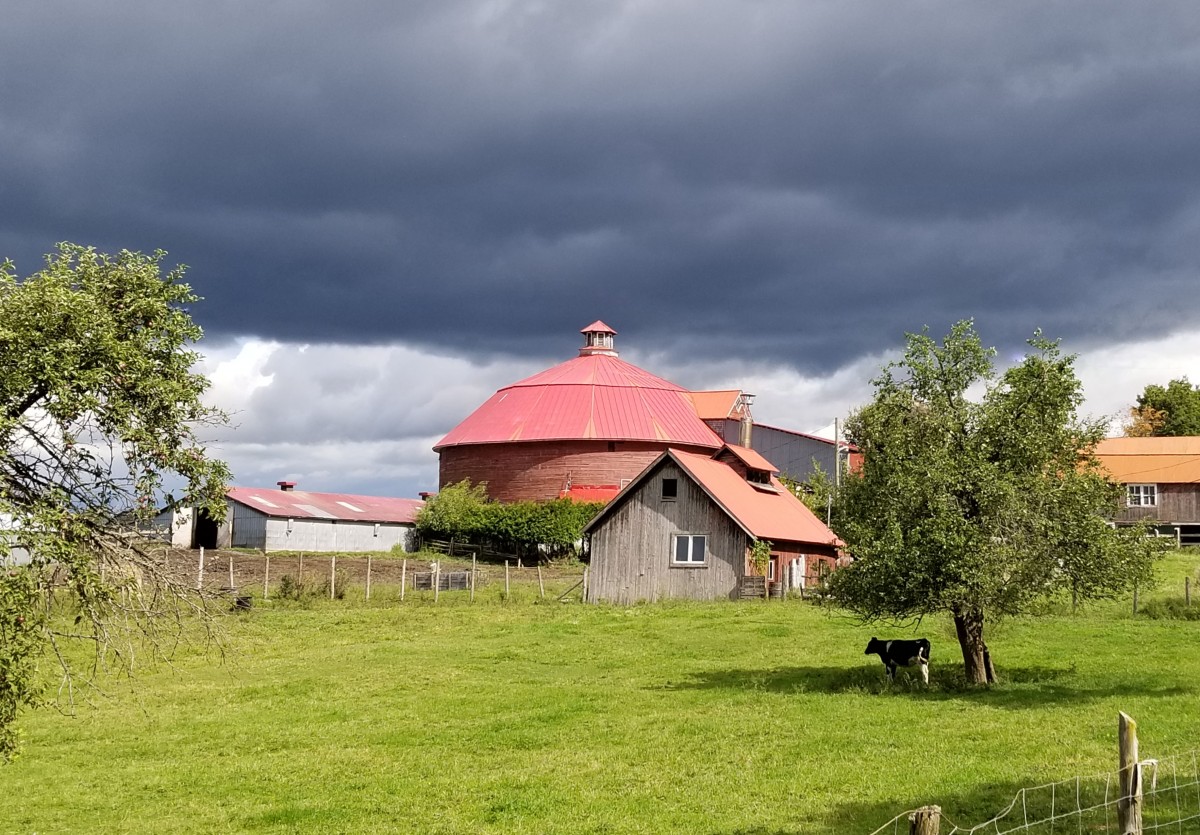
The impressive Stanley-Holmes round barn, built in 1907 for William Stanley Holmes, a dairy farmer, has been well taken care of over the years by its owner, M. Stanley Holmes, grandson of William. His constant attention and all the care he devoted to its upkeep has raised this country barn to the rank of being a true heritage art masterpiece.
2523, Holmes Rd, Barnston-Ouest
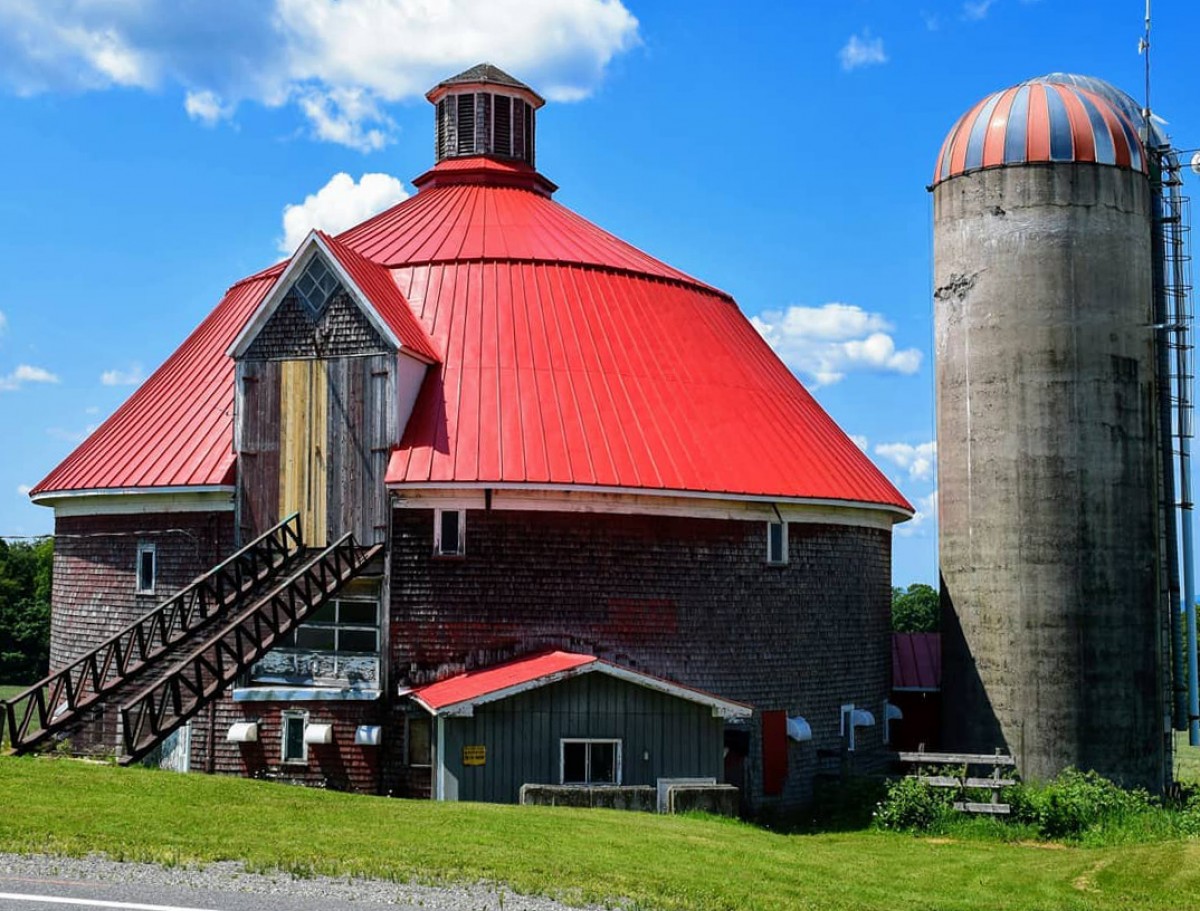
As you head out to Mount Pinacle or to the beach at Lyster Lake, you’ll find the biggest round barn of the Townships right here on the Baldwin Mills-Barnston road. Even though it hasn’t been used since 2009, and although it really needs a lot of love, it still offers a fine glimpse of the past with its cedar shingle siding and its pretty turret.
1282, Baldwin Mills-Barnston Rd, Coaticook
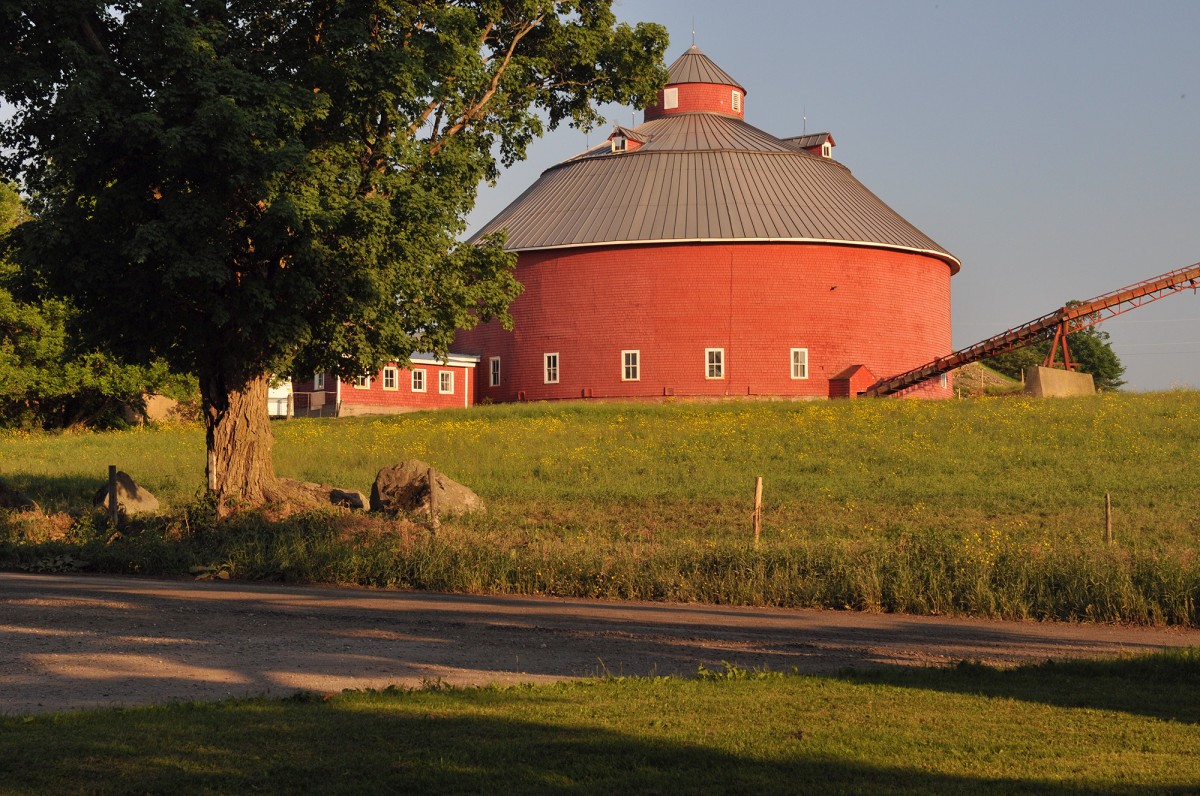
As you drive along bucolic Scott Road, in the Brome Lake area, you can admire the last round barn built in the Eastern Townships, in 1915–1916. It hasn’t been in use for several years, but it’s still remarkably well preserved. It cedar shingles, its pinched sheet metal roof, its dormers and its pretty turret all contribute to its olden day charm.
35, Scott Rd, Brome Lake
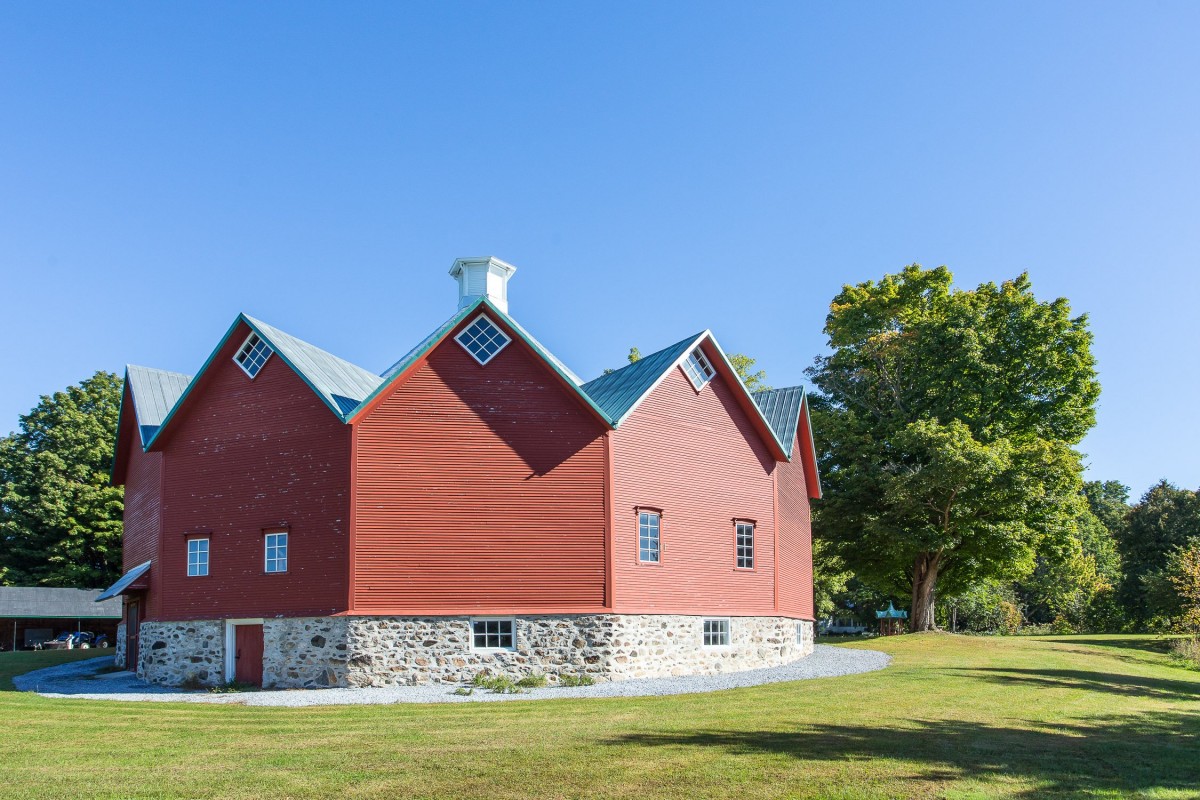
Built in 1882, the Walbridge barn, although not quite circular, is absolutely worth a visit. You’ll be amazed by the originality of its dodecagonal structure (12 sides!), unique in Quebec, its gable walls and two-sided roof. Very well preserved, the barn houses the agriculture collection of the Missisquoi Museum, and can be visited from tuesday to sunday. Visit the museum to admire the know-how behind these period construction techniques. What a great idea!
Please note that the museum will be open from May 26 to October 20, 2024. You can visit the barn from 10 am to 4 pm Tuesday through Friday, and from 1 pm to 4 pm on Saturdays and Sundays (for a specific period, barn visits on weekdays will be by appointment only). You can also visit the Cornell Mill and Hodge's General Store between 10 am and 4 pm.
189, Mystic Rd, Saint-Ignace-de-Stanbridge
True architectural gems, round barns were popular in New England throughout the second half of the 19th century. They first appeared in our region in the early 20th century.
There’s one legend that has persisted over time about the origins of round barns: It was believed they were built this way so the devil couldn’t hide in any dark corners. However, much more practical reasons motivated builders to use this type of structure because it allowed farmers to organize their work much more efficiently. Livestock was placed in the centre to facilitate feeding and cleaning chores; Windows could be installed all around and ensured a constant source of light, a better air circulation, and the round shape was less vulnerable to strong winds. Finally, besides being quite attractive buildings, these round barns were extremely efficient.
So, why did they stop building them so quickly? The reason is quite simple: Their round shape made it difficult to add more space to the structure; plus, their construction required a lot of building materials. This is why, after a brief period of popularity, people stopped building them and opted for the rectangular shaped barns we know today.
Nowadays, only a handful remain. Many were destroyed by fire or demolished due to their lack of maintenance, which had become too expensive.
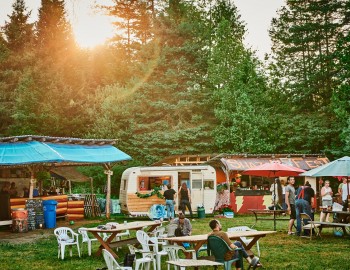
5 Things to Do in...
5 Things to Do in... Barnston-Ouest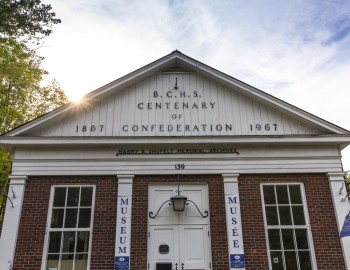
Arts, culture and heritage
24 Amusing historical Facts About the Eastern Townships
Taste the Townships
5 public markets that stand out
Filters
X






